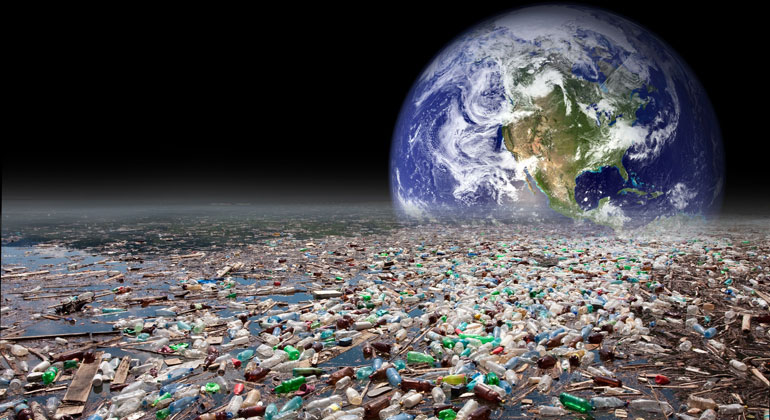New Research Paper Reveals there aare more than 170 Trillion Pieces of Plastic afloat in the World’s Oceans
A research paper published today in PLOS ONE1 reveals there are more than 170 trillion (171 000 000 000 000 000 000!) plastic particles, weighing approximately 2 million tonnes, afloat in the world’s oceans. By evaluating trends of ocean plastic from 1979 to 2019, the authors observe a rapid increase of marine plastic pollution and make an urgent call for policy measures focused on source reduction and reuse rather than recycling and cleanup.
Understanding occurrence and trends of plastic in the environment are foundational to assessing current
and potential future risks to humans and ecosystems. The co-authors used previously published and new
data (11,777 samples) of floating ocean plastics to create a global time series that estimates the average
counts and mass of microplastics in the ocean surface layer. The paper also offers a historic overview of
international policy measures aimed at reducing plastic pollution to evaluate their effectiveness.
From 2005 onward, there is a rapid increase in the mass and abundance of ocean plastic, which may
reflect exponential increases in plastic production, fragmentation of existing plastic pollution, or changes
in terrestrial waste generation and management. Without immediate action, the rate of plastic entering
aquatic environments is expected to increase approximately 2.6 fold from 2016 to 20402. This
acceleration of marine plastic pollution demands urgent international policy intervention at the source
of plastic production and product manufacture – before waste is generated – in order to minimize
ecological, social, and economic harm.
“The exponential increase in microplastics across the world’s oceans is a stark warning that we must act
now at a global scale, stop focusing on cleanup and recycling, and usher in an age of corporate
responsibility for the entire life of the things they make,” said Dr. Marcus Eriksen, Co-Founder of The 5
Gyres Institute. “Cleanup is futile if we continue to produce plastic at the current rate, and we have heard about recycling for too long while the plastic industry simultaneously rejects any commitments to
buy recycled material or design for recyclability. It’s time to address the plastic problem at the source.”
We are at a turning point in history, with United Nations Member States adopting a resolution to end
plastic pollution at UNEA 5.2 last year3. Existing international policies on plastic are fragmented, lack
specificity, and do not include measurable targets. Creating binding and enforceable international
agreements focused on source reduction is the best long-term solution. As treaty negotiations are
underway, it’s crucial to establish a legally binding global treaty that addresses the full life cycle of
plastic, from extraction and manufacturing to its end of life.
The 5 Gyres Institute published the first Global Estimate of Marine Plastic Pollution in 20144, which
determined there were more than 5 trillion plastic particles afloat in the ocean. The updated paper
brings together many of the same co-authors and scientists who are leaders in ocean plastic research,
including Edward Carpenter, who published the first paper on plastic in the ocean in 1972; Robert Day,
who first discovered plastic in the North Pacific in 1985; and Charles Moore, who discovered the Great
Pacific Garbage Patch in 1997.
- For more information, visit 5gyres.org/plasticsmog.
- 1 https://journals.plos.org/plosone/article?id=10.1371/journal.pone.0281596
- 2 https://www.science.org/doi/10.1126/science.aba3656
- 3 https://www.unep.org/news-and-stories/press-release/historic-day-campaign-beat-plastic-pollution-nations-commit-develop
- 4 https://journals.plos.org/plosone/article/authors?id=10.1371/journal.pone.0111913








